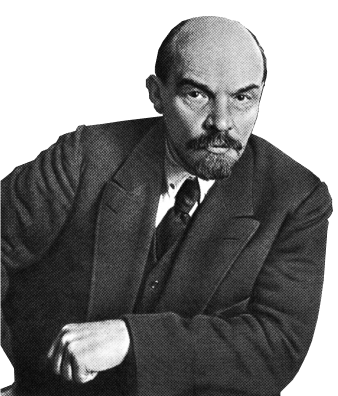Workers at Nemak Windsor Aluminum plant, a GM supplier, have occupied the plant in response to the announcement that the plant is shutting down in 2020. More than 250 jobs are at stake if the plant is shuttered. This is particularly egregious union-busting from management, considering that a guarantee of production through 2022 was negotiated in Unifor Local 200’s most recent collective agreement. In that agreement, workers accepted a wage freeze in order to guarantee their jobs while the federal and provincial governments chipped in $4.5 million in subsidies to the company. By occupying the plant, the workers seek to keep equipment from being shipped out of the factory, forcing production to continue or the company to abandon valuable capital investments.
Unifor National President Jerry Dias has sounded a militant tone following this occupation, saying that if the jobs are not saved, “they’re either going to sue us or they’re going to throw me in jail.” This process has already begun, as the Ontario Labour Relations Board (OLRB) has already ruled that the action by the workers is an “illegal strike”, and on Thursday, September 5 a Windsor judge granted Nemak an injunction against the blockade—an injunction that the workers have thus far defied. These strong words, however, contrast starkly with the sell-out deal that Dias pushed in Oshawa following the announcement of the closure of the GM Oshawa plant, which leaves GM Oshawa with only a shadow of its former production. In that sell-out deal, Dias bargained with the GM bosses to keep only 300 of more than 2,500 jobs at the plant. This deal did nothing at all for the many workers in the nearby feeder plants in Oshawa, who are in much the same position as the Nemak workers in Windsor. Dias is also responsible for pushing concessionary contracts in Unifor’s last round of bargaining, in which workers took wage freezes and accepted two-tiered pensions with new hires left out in the cold in exchange for a guarantee of continued production. Fightback called on Unifor members to reject these two-tiered contracts at the time, arguing “if a corporation is going to pack up and leave there is nothing in a union contract that can stop them. The only thing that can save jobs in this situation are factory occupations and a demand for nationalization.”
Occupying the factory is an important, militant step by the workers in Unifor Local 200. Factory occupations have been an essential tactic of the workers’ movement, going back to the sit-down strikes by autoworkers in the CIO in the 1930s and ’40s. The factory occupation has a particularly important history in this specific union local. It was a militant sit-down strike and factory occupation in 1945 by UAW Local 200, the forerunner of Unifor Local 200, that won the legal right to union representation and automatic dues checkoff for workers in Canada. This historic strike carries many important lessons for the current struggle. When the police were called in to break the 1945 strike in the Ford plant, more than 8,000 workers—coming not just from the Ford plant that was on strike, but from across the auto industry in Windsor—went out on solidarity strike with them. As a result, they won one of the most significant victories for the working class in Canadian history.
As in the 1945 strike, the bosses’ government is seeking to break the occupation of the factory by the workers. The workers have already defied an OLRB ruling and an injunction from Justice Terry Patterson, and if the workers continue to defy the injunction we can expect that the police will be sent in to break the strike, just as they were in the 1945 Ford strike. The workers in Unifor Local 200 cannot be expected to defy the injunction against the blockade of the plant alone; they need the support of the rest of the labour movement. If the struggle to save the jobs at the Nemak plant in Windsor is to be successful, it needs to be linked with the fight to save jobs at GM Oshawa and in the Oshawa feeder plants. Just as the victory of the landmark 1945 Ford strike was the result of an industry-wide strike in Windsor, so must this current factory occupation spread to Oshawa in order to be successful. The Oshawa GM plant should be occupied along with any feeder plants that are being shut down. We should remember that these plants are not being closed because they are unproductive. On the contrary, they are some of the most productive plants in the world. But from the perspective of the capitalists, it is more profitable to produce their commodities abroad paying much lower wages. The problem is not a lack of need for the industrial output that these factories produce–there is a desperate need in Canada for more public transportation vehicles, for example–but that the bosses believe that they can make even larger profits by exploiting workers in low-wage jurisdictions. This is why we need a democratically planned economy built around production for need rather than profit.
There has recently been an uptick in the fight for free public transit with CUPE Local 2, representing TTC electricians, coming out in support of free public transit. To achieve this goal there will need to be a dramatic increase in transit infrastructure, as the current systems are already stretched beyond capacity. The way to both save the jobs and meet Canada’s transit needs is to nationalize the plants under workers’ control without compensation to the owners, and repurpose production to produce much-needed public transit vehicles. The Unifor Solidarity Network, a left-wing group of rank-and-file Unifor members fighting for a militant and democratic union, has already come out in favor of nationalizing the GM Oshawa plant. A post on the network’s blog called for public ownership of the plant and a green transition to “save the manufacturing capacity, and repurpose the plant for electric vehicles, public transit, and renewable energy products. We desperately need that bold action by government anyway to meet the current climate crisis. What better place to start than in Oshawa? If we leave it up to GM, they will put their profits first, and the public interest last. We can’t accept that capitalist cold-hearted logic.” They also explicitly join the call by the Canadian Union of Postal Workers to make the entire Canada Post fleet electric in the next five years, with electric cars built in a publicly owned factory.
The factory occupation in Windsor should also be linked as much as possible with the struggle of factory workers in Mexico, where more than 40,000 workers were on strike earlier this year in the industrial center of Matamoros, near the U.S. border. As we can see from the failure of the ill-fated “boycott Mexican cars” campaign organized by Unifor’s leadership after the announcement of the shuttering of GM Oshawa, Canadian economic nationalism is not a solution to multinational corporations shipping jobs to low-wage jurisdictions. Only by linking the struggles of autoworkers in Canada with those of the Mexican working class can we raise the floor for all workers and reverse the race to the bottom, because it is the looting of South and Central America by U.S. and Canadian imperialism that creates these low-wage jurisdictions in the first place. Nemak may be trying to move jobs to Mexico, but it is the bosses who exploit workers in Canada and in Mexico that are our mutual enemies, not Mexican workers. Manufacturing in the present era is heavily globalized, and so the struggle of manufacturing workers must by necessity be international. Nationalist attacks on Mexican workers only serve to divide the workers in our fight with the bosses of multinational companies. Unifor Local 222, representing workers at GM Oshawa, has already taken commendable steps in the direction of proletarian internationalism, breaking the radio silence of their national union and writing to congratulate the Matamoros strikers on the substantial wage increases that they won in their strike. In his letter of support to the Mexican workers, Unifor Local 222 President Colin James wrote that the “goal of corporations is to try to keep workers isolated and weak. Our response should be to become more united so we are stronger.”
The factory occupation in Windsor comes at a time when teachers and support staff in Ontario public schools are locked in a ferocious fight with the Doug Ford government. A wave of factory occupations linked up with a large strike of public sector workers would have the potential to bring down the Ford government. The fight against job losses and plant closures in Windsor and Oshawa is closely tied with the fight of postal workers for a greener Canada Post, and the fight of transit workers for free transit, because these factories can be repurposed to meet those needs. To win each of these battles we will need the spirit of solidarity of the Windsor sit-down strikes in 1945. A wave of solidarity strikes can bring together the broadest possible sectors of the working class for nationalization and a socialist plan of production to save jobs, increase wages, and address the climate crisis.
A factory closed is a factory occupied!
Defy the injunction! Continue the occupation!
Spread the factory occupations!
Nationalize the plants under workers’ control!
Fight climate change with a socialist plan of production!
Update, September 16, 2019
On Sunday, Sept. 15, 2019, the company accepted a renewed proposal by Unifor executives to end the factory occupation and put the fate of the 270 workers in the hands of an arbitrator “regardless of the outcome”. In return for the workers removing the barricades, the scandalous court-imposed fines were removed. However, there is no guarantee that this will result in a favourable outcome for the workers at the Nemak plant. In fact, arbitrators historically favour the employer and now that the barricades have been taken down, powerful pressure has been relieved off of Nemak.
As we said previously in this article, the occupation needed to spread and it was the responsibility of the leaders of Unifor to make that happen. Despite some external unions showing up to support workers at Nemak over the past few weeks, the occupation remained isolated and therefore it was hard to hold out on its own. The courageous defiance of a court injunction by members of Unifor Local 200 and all those workers involved in holding the line goes to show that unjust “laws” can be defied. Let’s remember it was Nemak that broke a collective agreement, not the workers. In this situation, the courts exposed their real role as defending the interests of the bosses. In the future, a leadership is needed to take the occupation all the way to victory and spread the movement.

